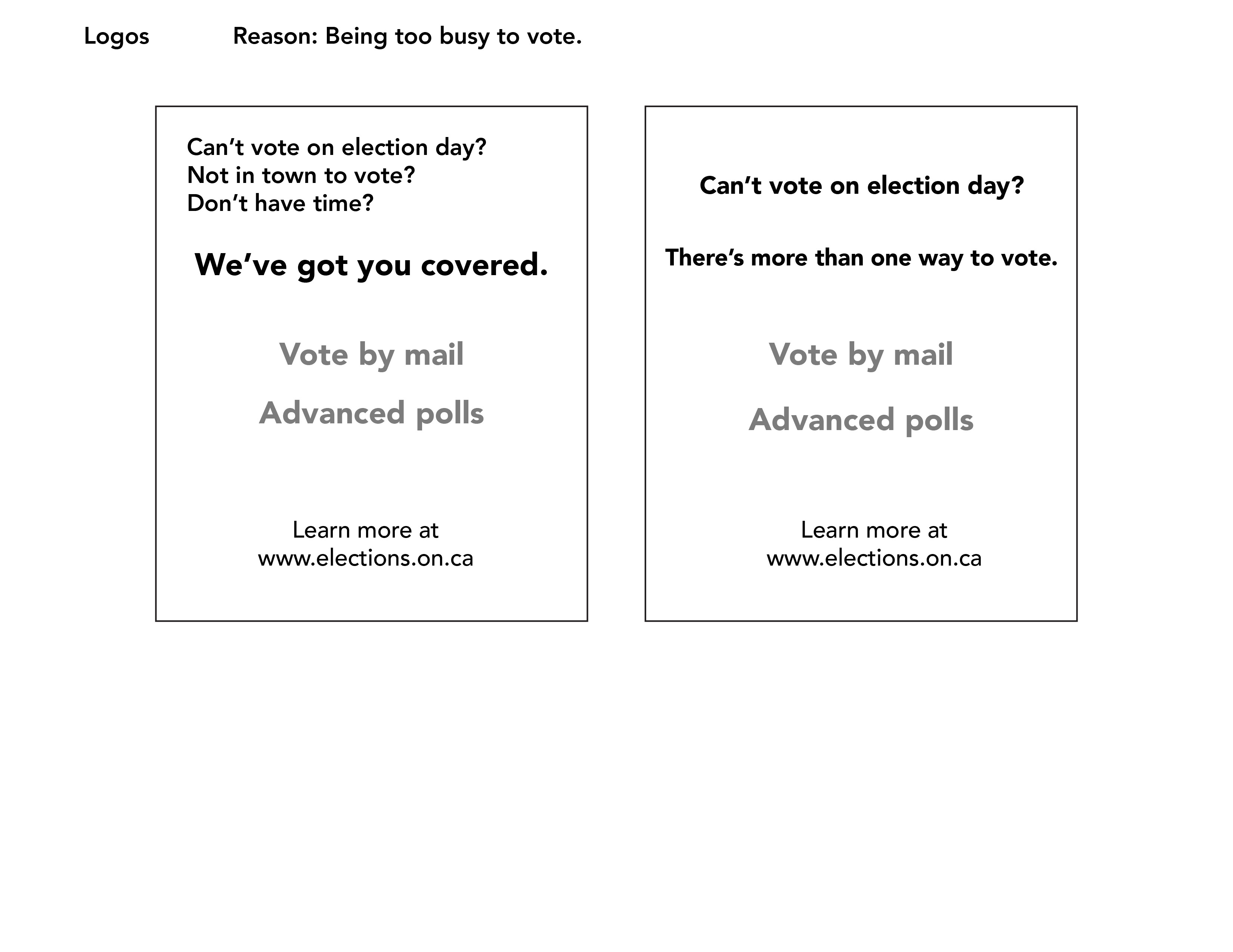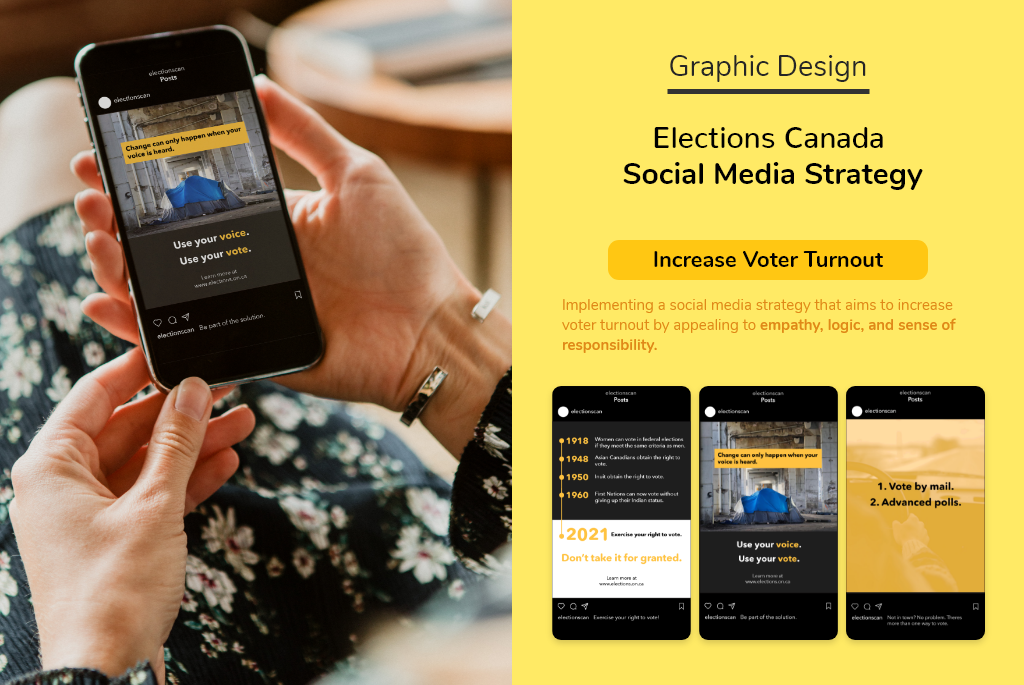
Purpose
How can social media be utilized to increase voter turnout?
Individuals ranging from age 18-24 had the lowest voter turnout in 2021. The main reasons for the 18 to 24 year old demographic is low voter turnout in are being uninterested in politics, being too busy, and being out of town.
These advertisements aim to provide solutions to being unable to vote due to being too busy or being out of town, and provide persuasive reasons to take part in voting despite being uninterested in politics. The platform of choice is Instagram, as it is used most frequently by those within the 18-24 year old age group.
The social media posts appeal to the target demographic in three ways.
- Pathos - Appealing to empathy, sympathy, and emotion.
- Ethos - Appealing on the basis of the message's authority.
- Logos - Appealing to logic by providing a solution for a problem.
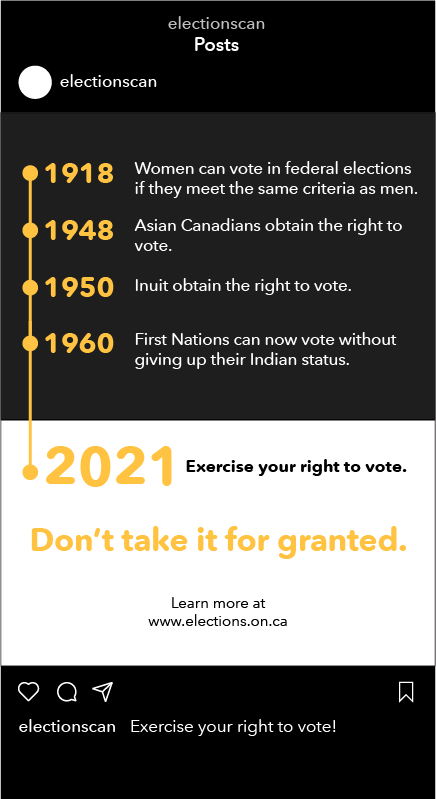
Ethos

Pathos
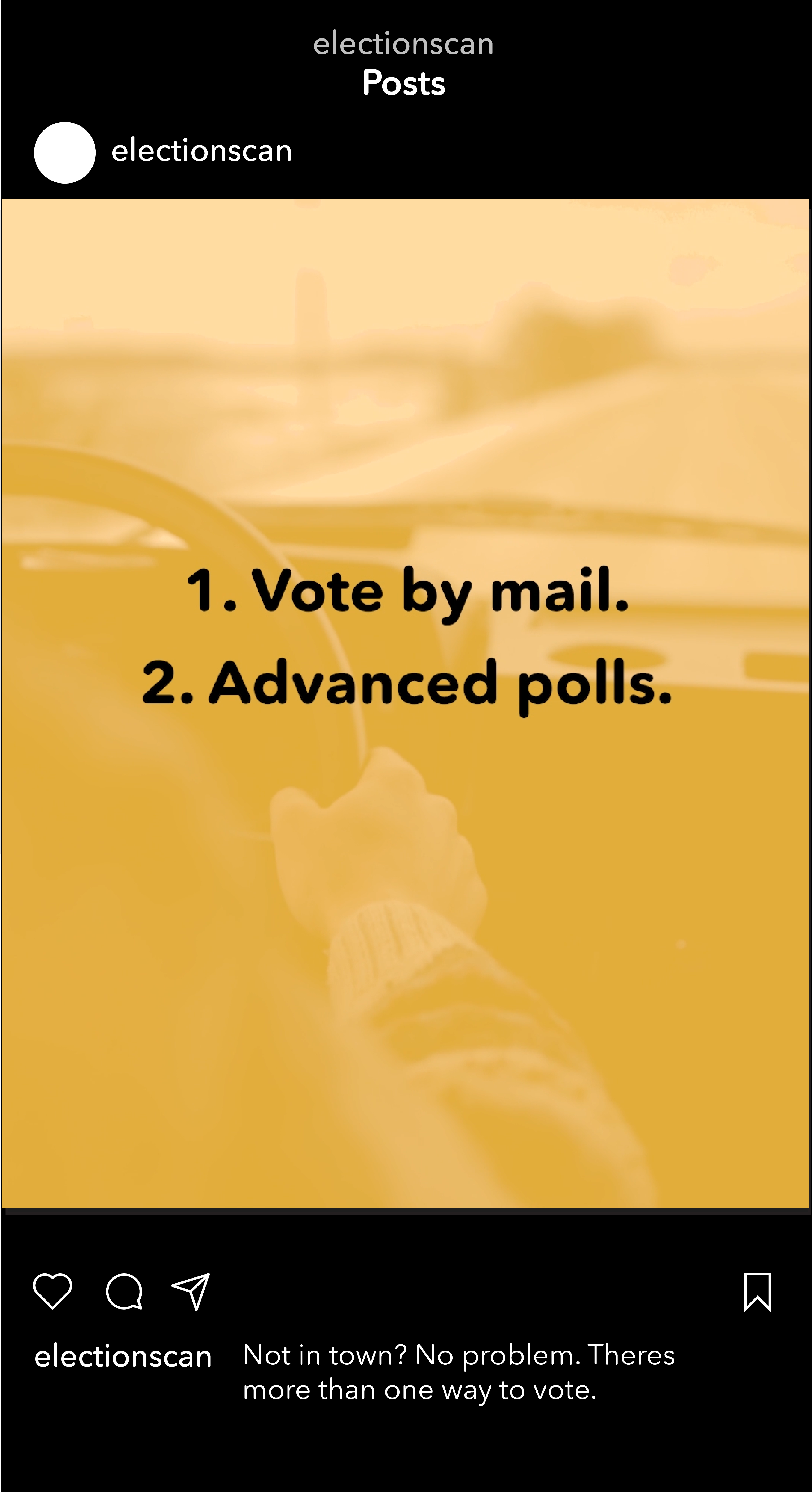
Logos
Persona - Target Audience
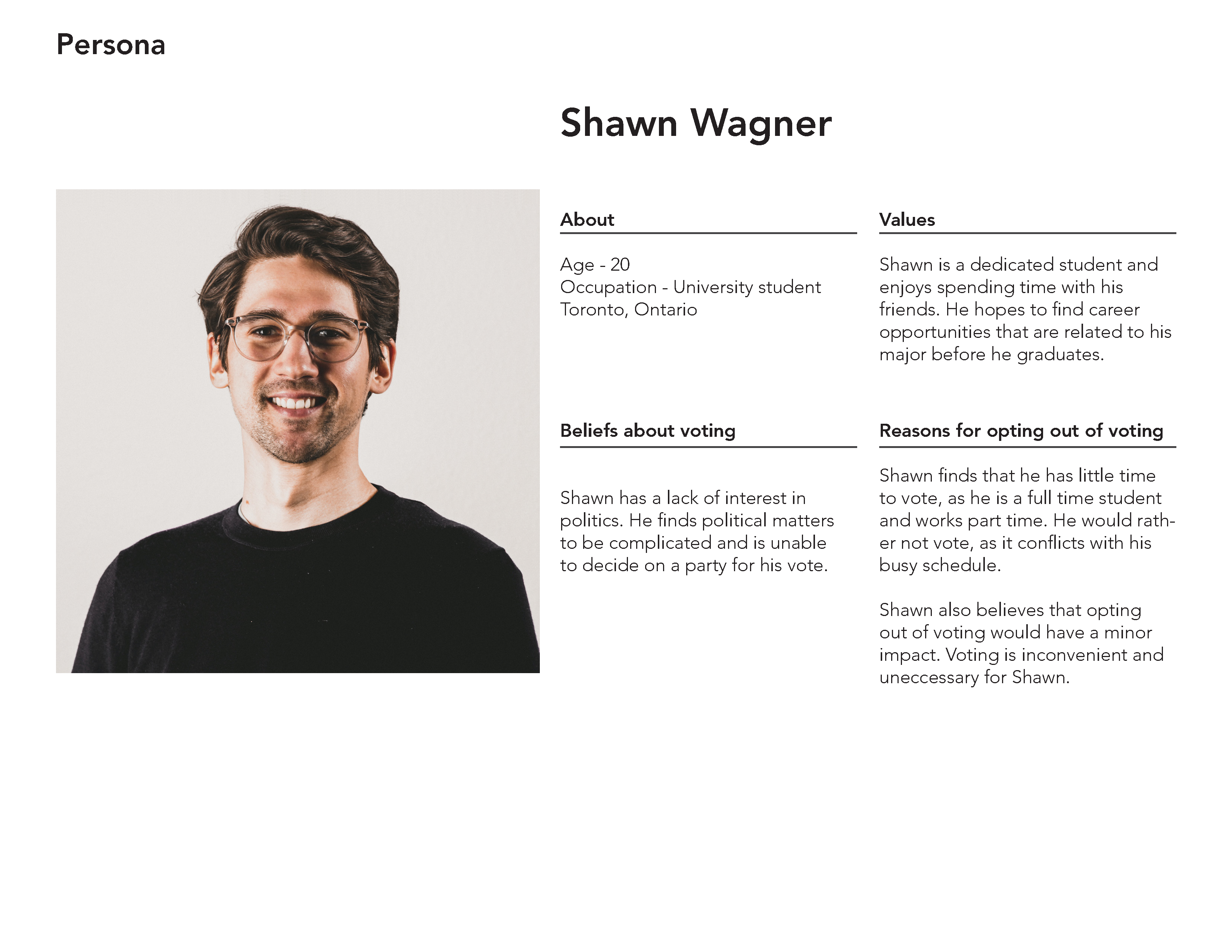

Social Media Posts
Ethos

Introduction
This post appeals to ethos. It makes use of credible information about Canada’s political history to convince its viewers to vote. It highlights a long history of people of various demographics obtaining the right to vote throughout several points in history.
This information is persuasive because it provides information that outlines Canada’s history of injustices towards various demographics. It suggests that because of this history, it is the responsibility of current Canadians to make use of what can be viewed as their privilege to vote, when people similar to them in the past were unable to do so.
The visuals on this ad emphasize the dates on which the political milestones took place. The years are emphasized in a yellow color to draw attention to that information; viewers may find that these milestones did not take place as long ago as they might have thought. These years are connected by a yellow representation of a timeline, which then leads to the larger typeface indicating “2021”. Reading the ad will lead the viewer to a white backdrop, which contrasts from the information at the top. The message on the right of “2021” follows the same position of the years before, drawing a parallel to the milestones. However, this message is different as it is a call to action. The final message “Don’t take it for granted.” is displayed in a large font size in a strong yellow to provide a bold statement, implying that it is the viewer’s responsibility to vote. This information may convince viewers with little interest in politics to vote, as the information appeals to their ethical concerns and sense of responsibility.
This information is persuasive because it provides information that outlines Canada’s history of injustices towards various demographics. It suggests that because of this history, it is the responsibility of current Canadians to make use of what can be viewed as their privilege to vote, when people similar to them in the past were unable to do so.
The visuals on this ad emphasize the dates on which the political milestones took place. The years are emphasized in a yellow color to draw attention to that information; viewers may find that these milestones did not take place as long ago as they might have thought. These years are connected by a yellow representation of a timeline, which then leads to the larger typeface indicating “2021”. Reading the ad will lead the viewer to a white backdrop, which contrasts from the information at the top. The message on the right of “2021” follows the same position of the years before, drawing a parallel to the milestones. However, this message is different as it is a call to action. The final message “Don’t take it for granted.” is displayed in a large font size in a strong yellow to provide a bold statement, implying that it is the viewer’s responsibility to vote. This information may convince viewers with little interest in politics to vote, as the information appeals to their ethical concerns and sense of responsibility.
Summary
- Political milestones presented to suggest authority and to trigger a sense of responsibility.
- Visual cues that lead users from the top of the page to the main message at the bottom.
Pathos

Introduction
This post appeals to pathos. The visual is meant to evoke an emotional reaction upon viewing the post. Presented in the ad is the living situation of a homeless person. This visual was chosen, as most individuals can sympathize with the struggles of homelessness, and this includes those who are between age 18 to 24. The ad suggests that voting is the best way to address issues that are important to the viewer. Viewers that have a lack of interest in politics may be more convinced to vote when they are motivated by values and ideals not directly or explicitly related to the topic of politics. This ad aims to appeal to that motivation.
A yellow backdrop is placed on top of the image. The message is paired with the visual, suggesting that changing the situation that is presented in visual can only take place if one’s own voice is heard. The text at the bottom portion of the ad indicates in larger text that one’s own vote is their voice, which relates to the message shown above. The words vote and voice and highlighted in yellow in order to emphasize the relationship between the two ideas, suggesting that voting is speaking out about issues that are important to the viewer. This appeals to the viewer’s emotion and may motivate them to vote in order to address an issue that is important to them.
A yellow backdrop is placed on top of the image. The message is paired with the visual, suggesting that changing the situation that is presented in visual can only take place if one’s own voice is heard. The text at the bottom portion of the ad indicates in larger text that one’s own vote is their voice, which relates to the message shown above. The words vote and voice and highlighted in yellow in order to emphasize the relationship between the two ideas, suggesting that voting is speaking out about issues that are important to the viewer. This appeals to the viewer’s emotion and may motivate them to vote in order to address an issue that is important to them.
Summary
- Appealing to homelessness, a common concern for those within the target demographic.
- Using a message that highlights the viewer's sense of agency.
Logos
The ad for logos starts with a backdrop of a person driving. It alludes to the issue of certain individuals being unable to vote due to not being in town or being too busy. The rest of the ad presents information in various ways on different backdrops. The information provided indicates the multiple ways in which people can vote if they are either too busy to vote or are unable to vote due to not being in town. It provides specific solutions and also leads to a link that users can check if they would like more information.
Summary
- Straightforward, fact based content.
- Leads users to sources for more information.
Process Work
Ethos
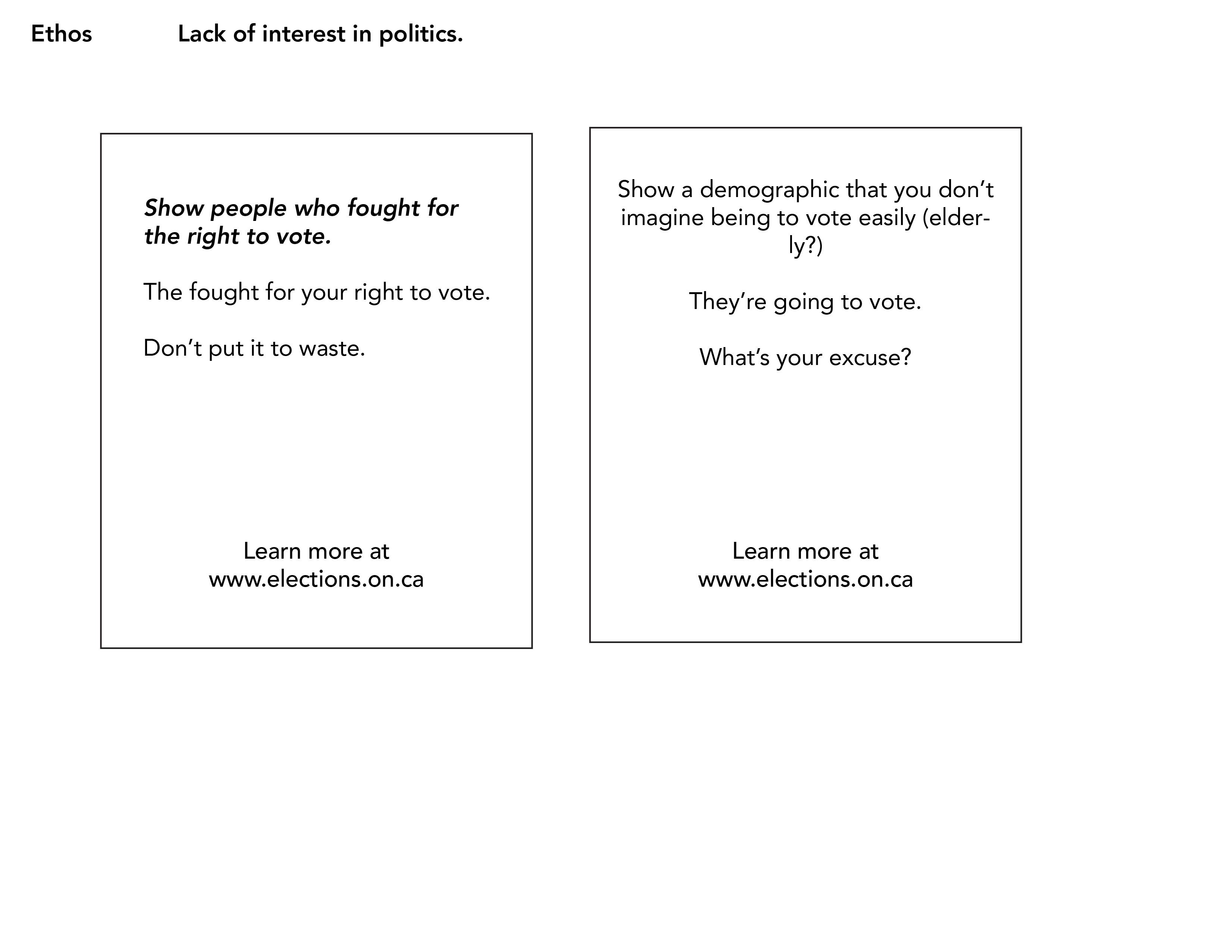

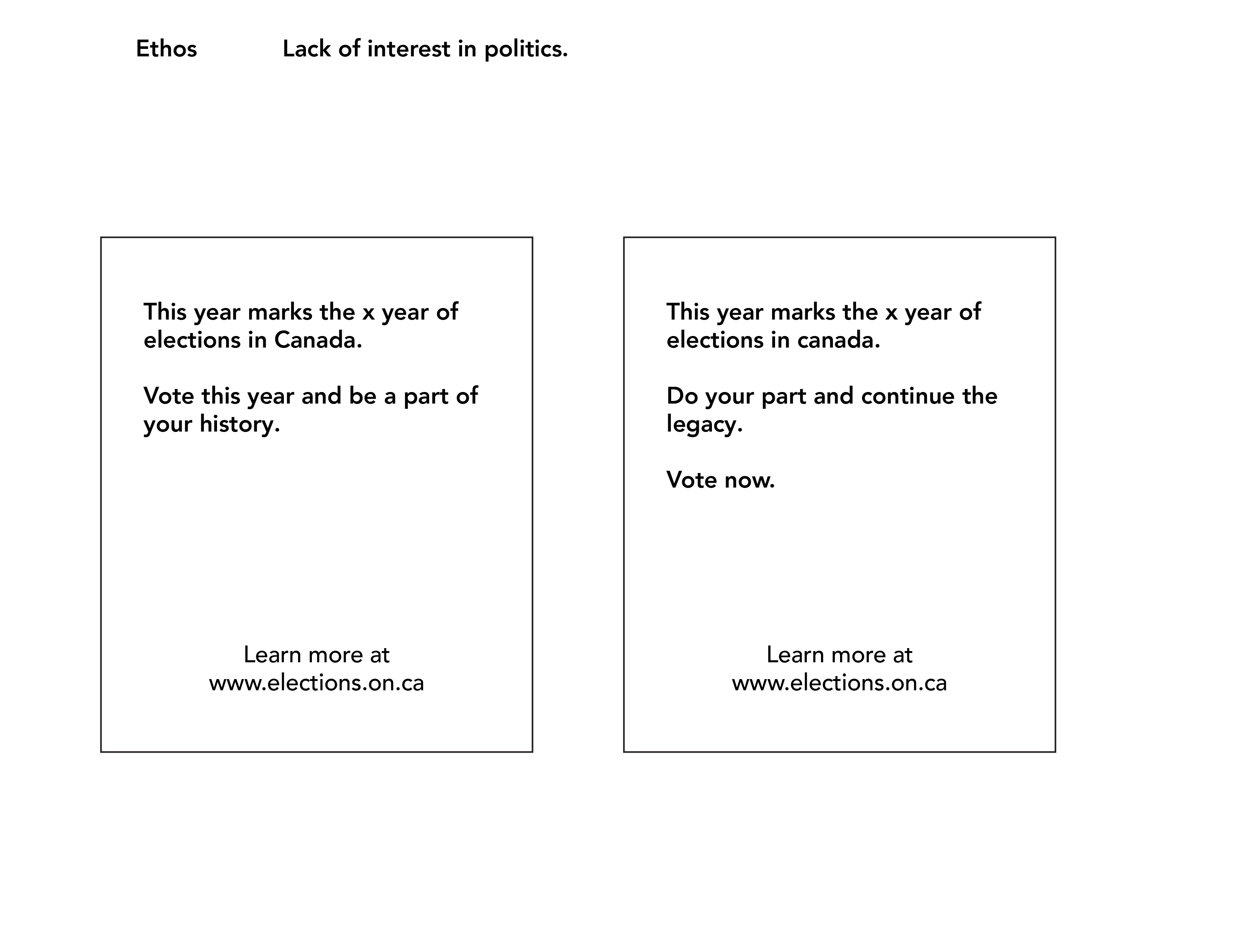
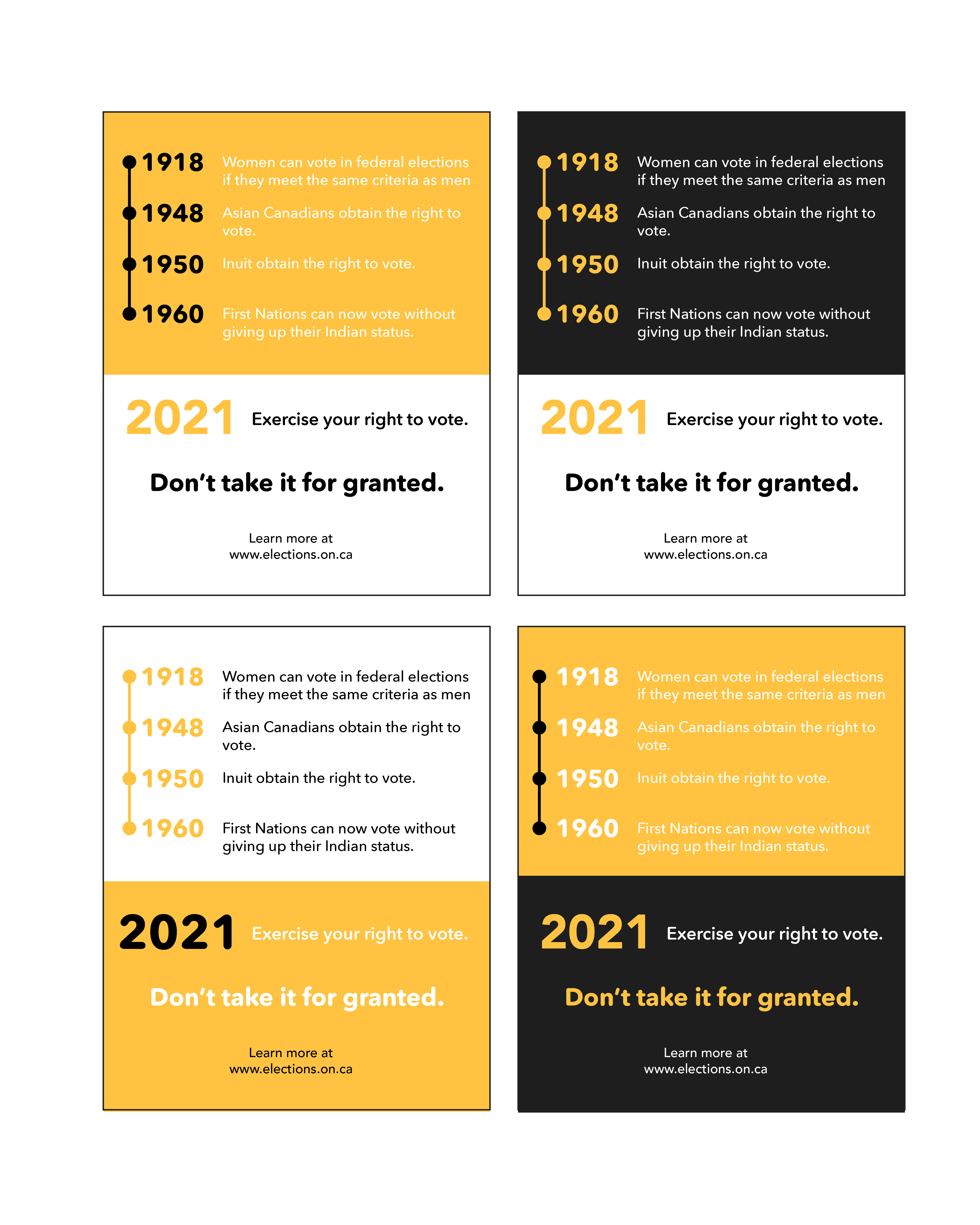

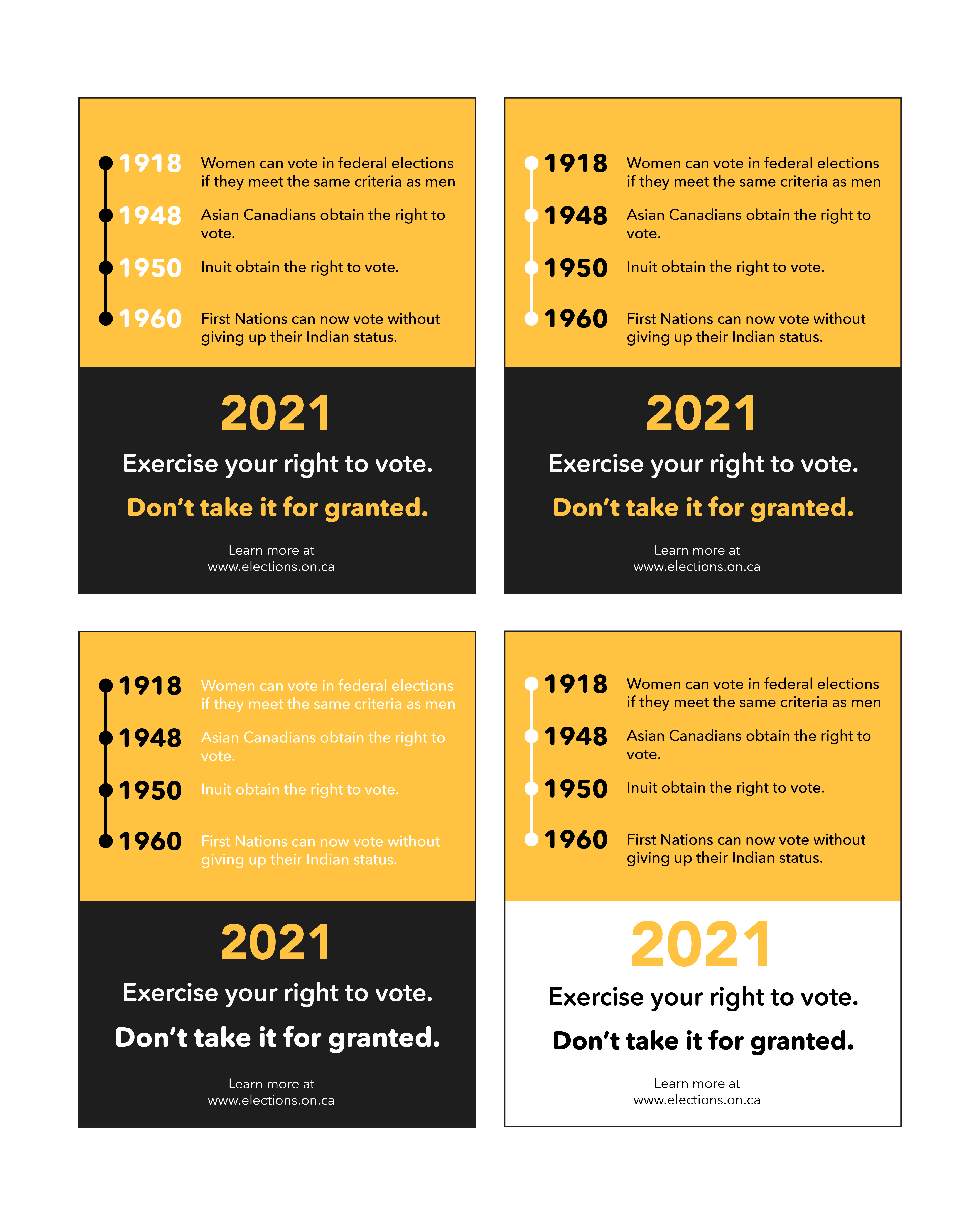

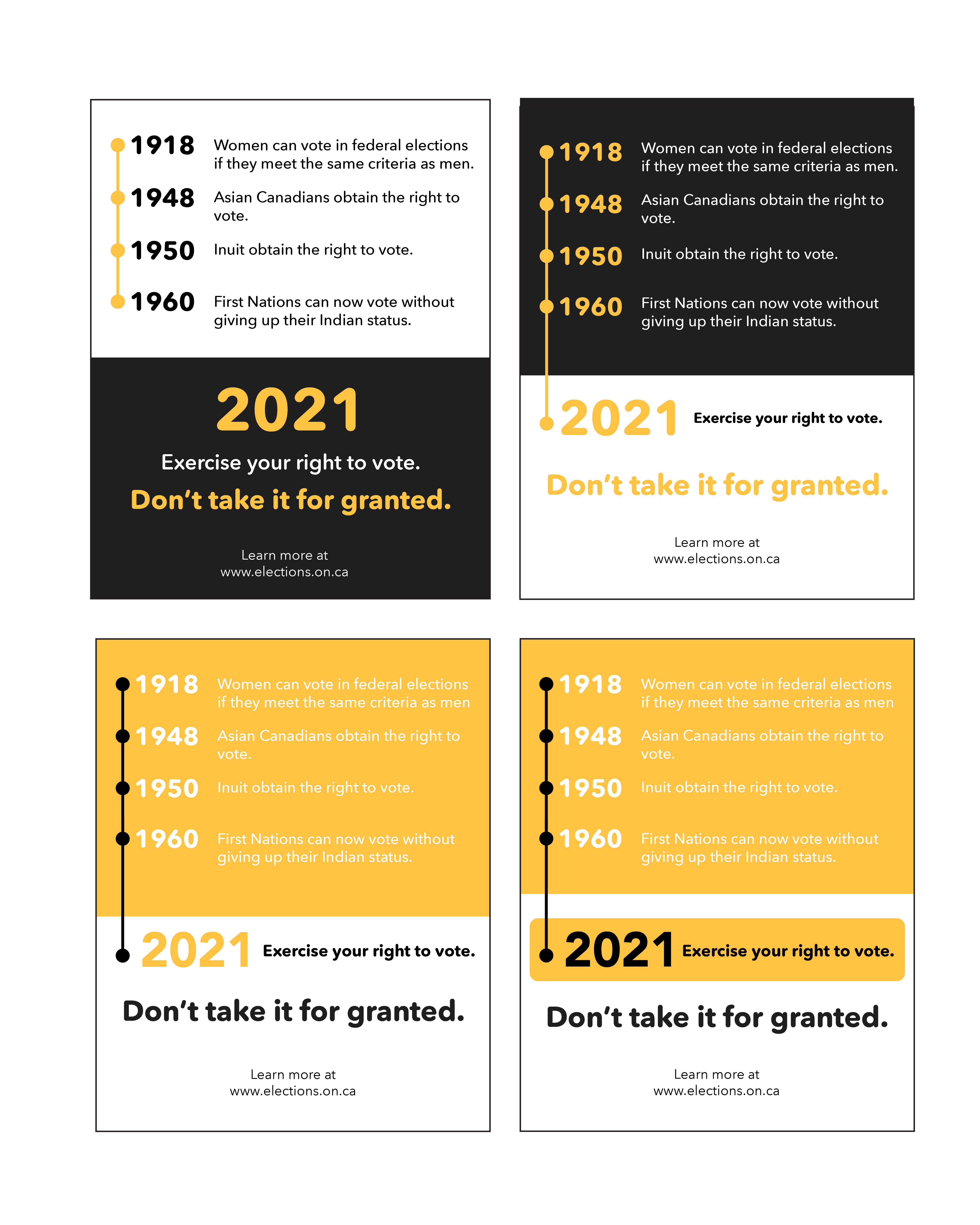

Pathos
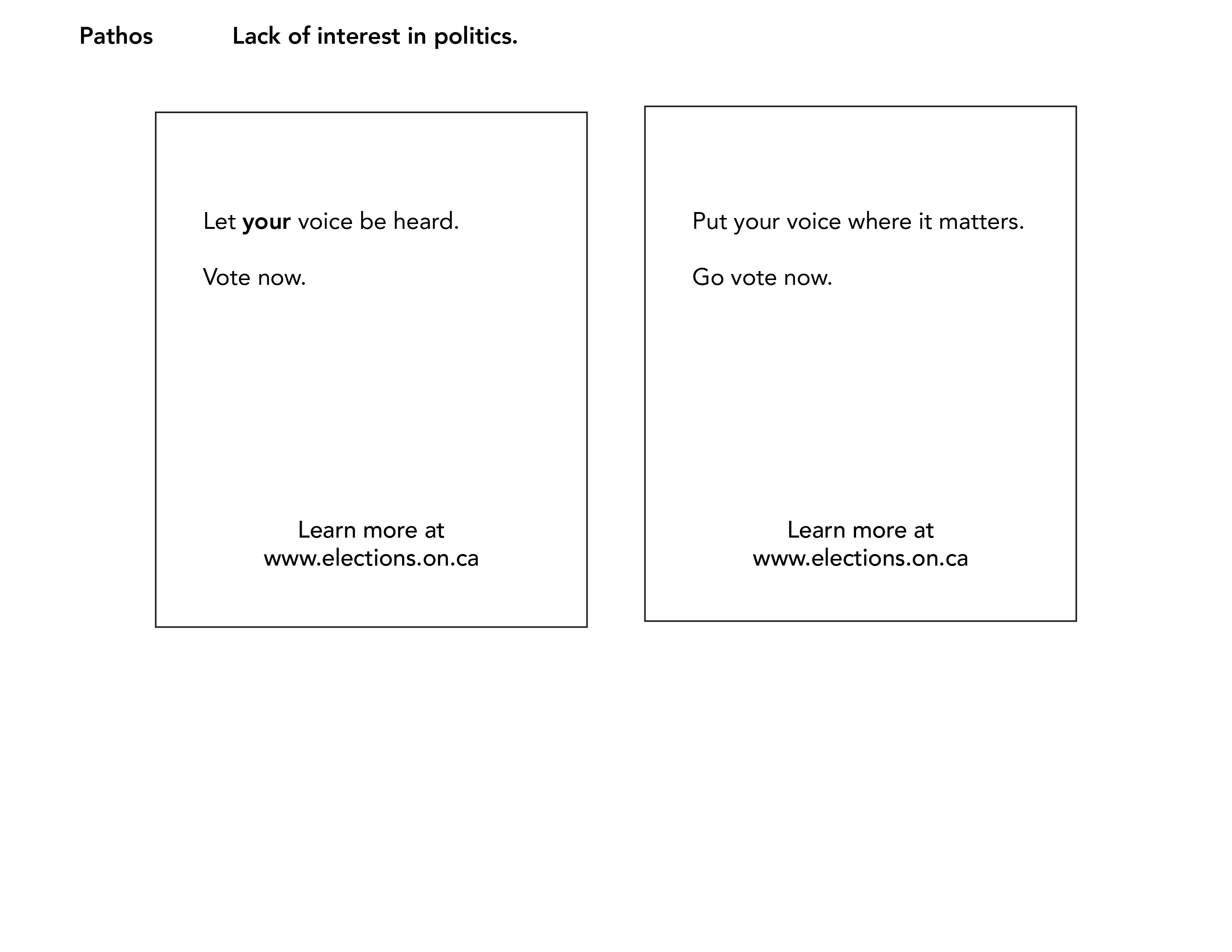
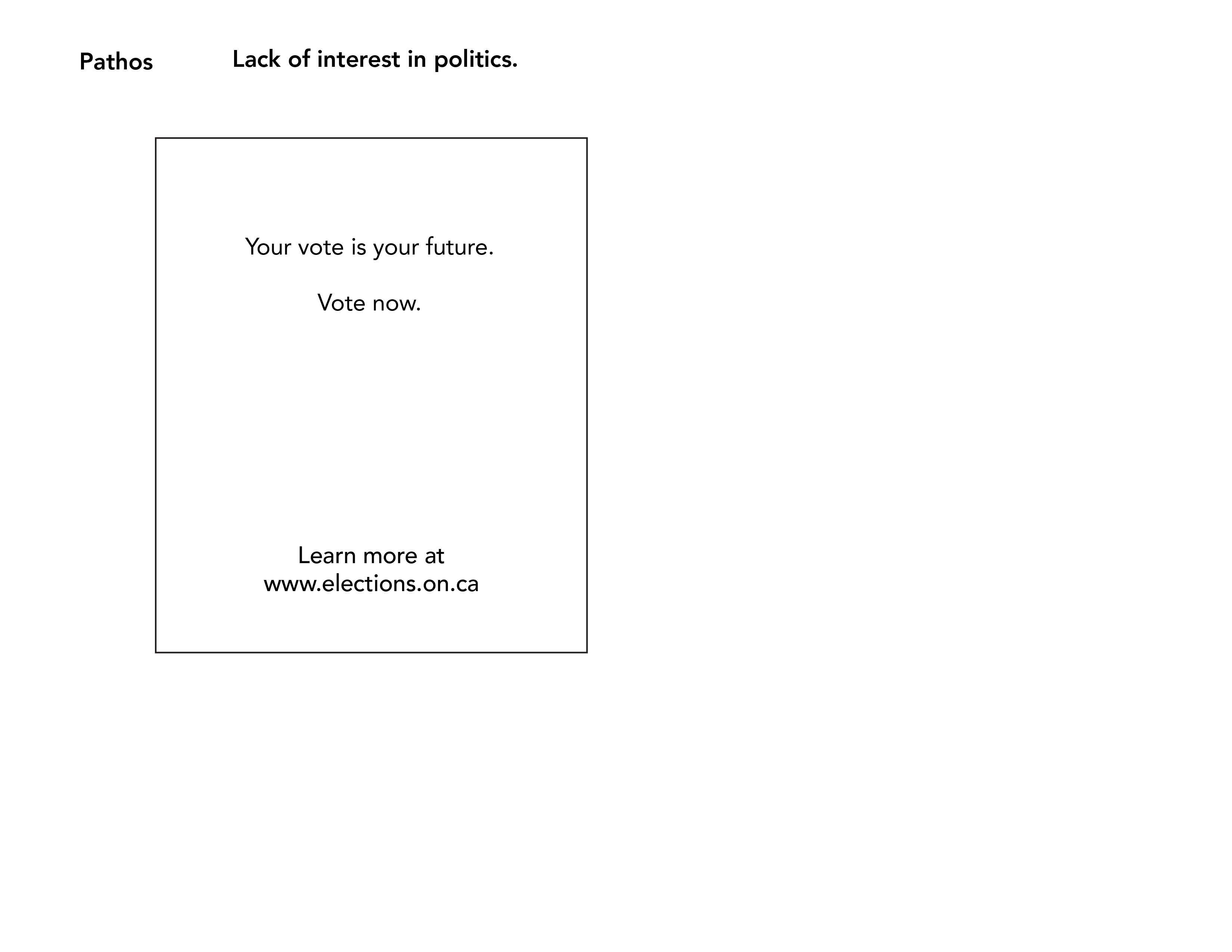

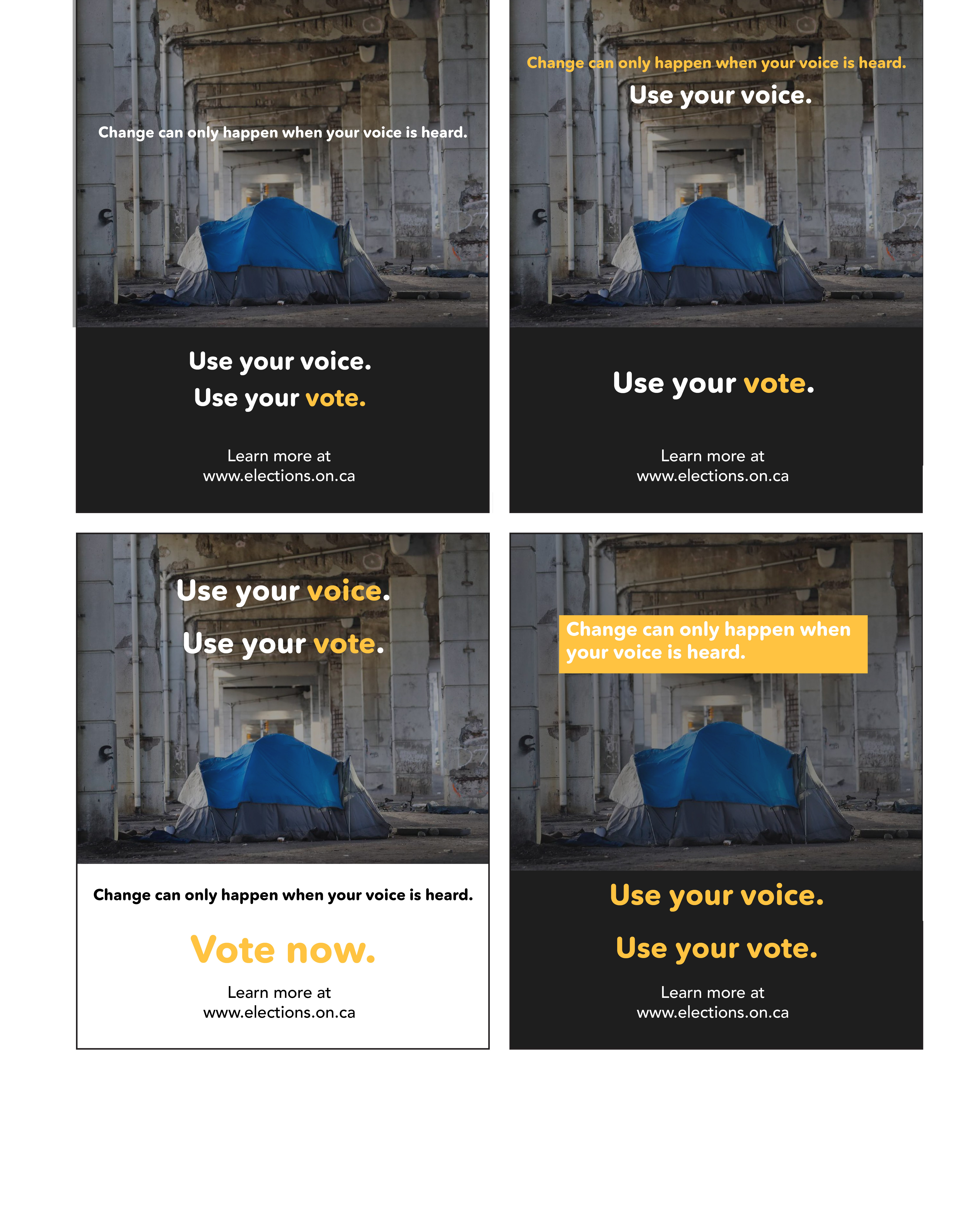

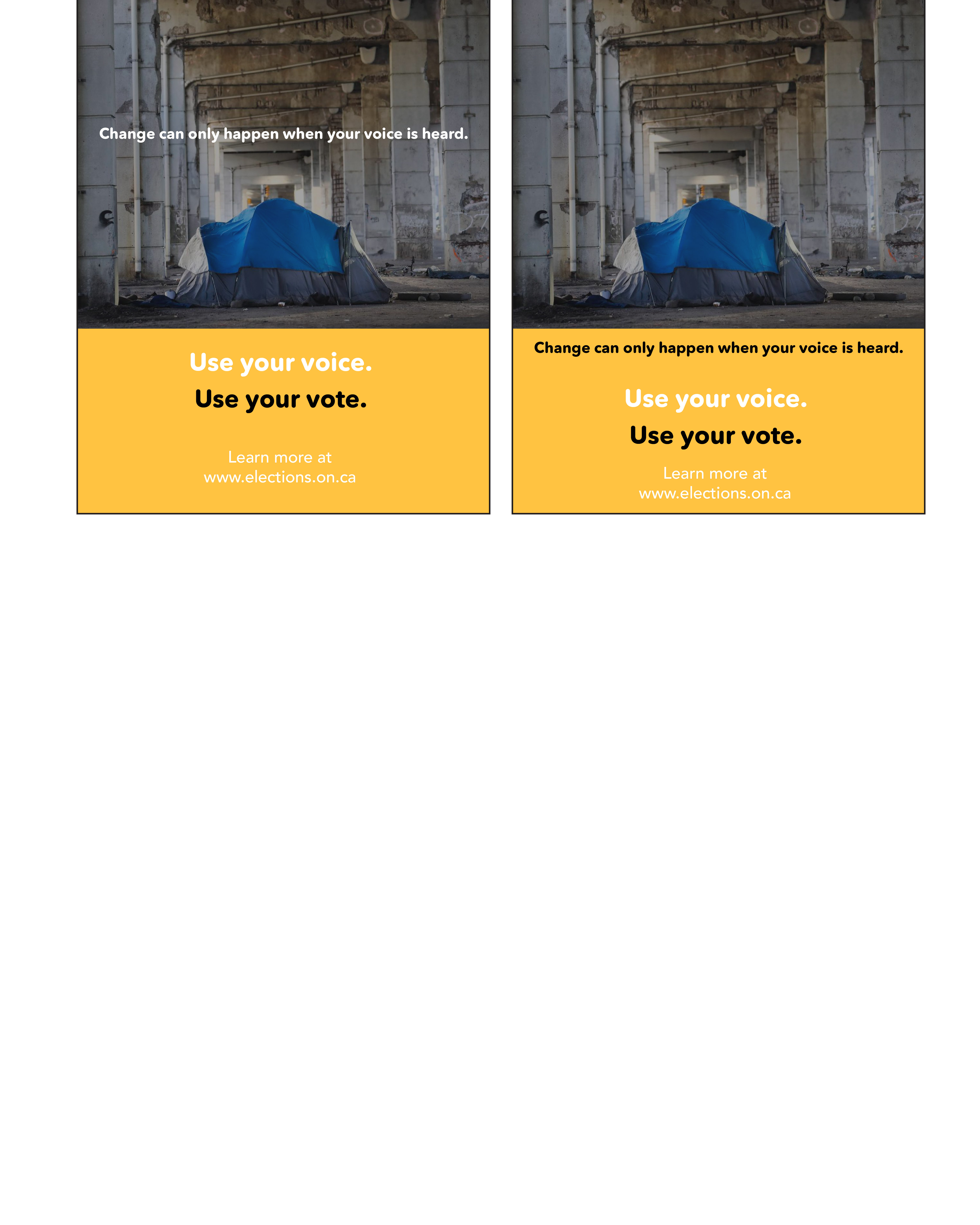
Logos
